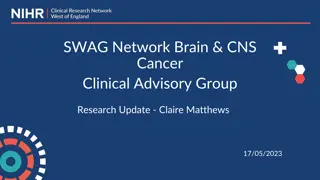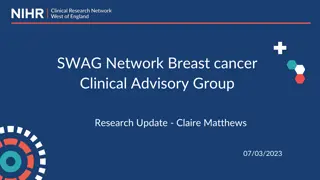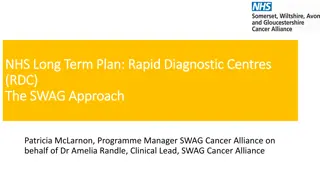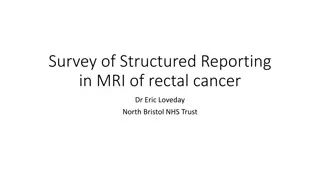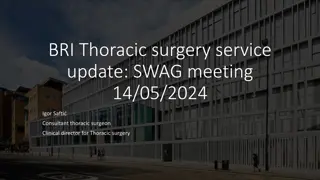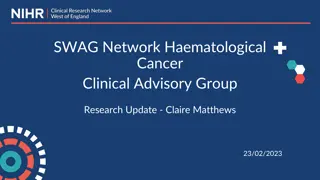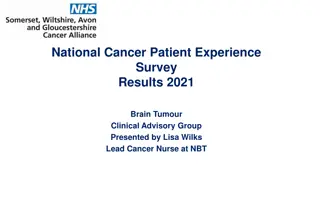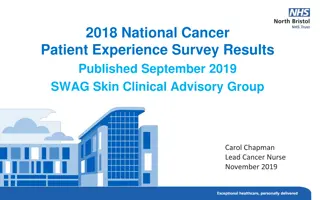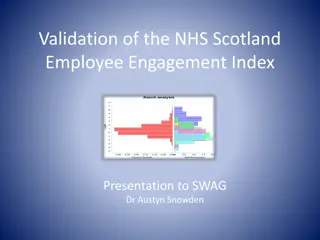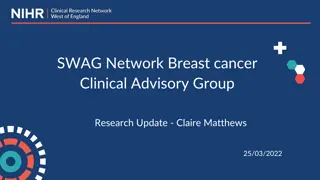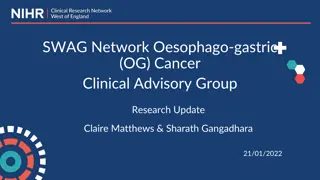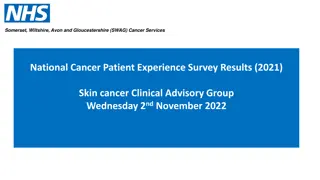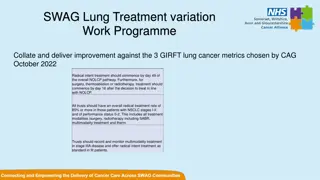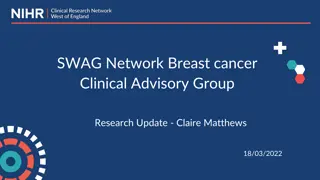
Diagnostic Accuracy of FIT in Adults under 50 Years
"Explore the diagnostic accuracy of the fecal immunohistochemical test (FIT) in adults under 50 years for early onset colorectal cancer, with insights on thresholds, evidence base, and previous studies. Discover the rationale behind FIT use and the increasing importance of screening in younger populations. Stay informed on the latest recommendations and advancements in colorectal cancer diagnostics." (Characters: 405)
Download Presentation

Please find below an Image/Link to download the presentation.
The content on the website is provided AS IS for your information and personal use only. It may not be sold, licensed, or shared on other websites without obtaining consent from the author. If you encounter any issues during the download, it is possible that the publisher has removed the file from their server.
You are allowed to download the files provided on this website for personal or commercial use, subject to the condition that they are used lawfully. All files are the property of their respective owners.
The content on the website is provided AS IS for your information and personal use only. It may not be sold, licensed, or shared on other websites without obtaining consent from the author.
E N D
Presentation Transcript
The Diagnostic Accuracy of The Diagnostic Accuracy of FIT in adults under 50 years FIT in adults under 50 years David Messenger Consultant Colorectal Surgeon & Colorectal Cancer MDT Lead UHBW University Hospitals Bristol & Weston
Rationale: the Problem Rationale: the Problem Rapid increase in early onset colorectal cancer (EOCRC) Defined as CRC diagnosis in patient aged <50 years Patients <50 years now account for 10% of new diagnoses in SWAG South-West England experiencing most rapid increase in EOCRC in UK 70% of EOCRC patients diagnosed with stage III/IV disease Distal tumours predominate 55-60% in either sigmoid or rectum 75% sporadic in nature 55% 10-year overall survival vs. 85% if known genetic component
Rationale: FIT use Rationale: FIT use Faecal immunohistochemical test (FIT) introduced in diagnostic pathways Screening expanding to adults aged 50-74 years Symptomatic 2WW Diagnostic performance well established 2WW referral based on 3% CRC risk in symptomatic population Current NICE recommendation of 10 g/g faeces Negative predictive value (NPV) 99.4% + at this value A good rule out test if negative
Rationale: FIT thresholds Rationale: FIT thresholds Symptomatic 2WW pathway Bowel Cancer Screening Programme NICE DG56, August 2023 Clear knowledge gap about diagnostic performance in young adult population Recommendation for threshold reduction to 20 g/g
Evidence base for FIT in adults <50 years Evidence base for FIT in adults <50 years Only 4 studies to date attempting to assess diagnostic accuracy Study Total FIT (n) CRC (n) Prevalence (%) PPV @ 10 g/g NPV @ 10 g/g Symptomatic Juul et al., Br J Cancer 2018 848 4 0.5 7.0 NS D Souza et al. Col Dis 2021 1103 16 1.5 6.8 99.7 Pin-Vieitio et al. UEGJ 2021 8866 27 0.3 7.3 99.9 Total 10817 47 0.4 - - Screened Kim et al., Dig&Liv Dis 2017 21942 4 0.02 NS NS
Previous study in SWAG in adults 50 years Previous study in SWAG in adults 50 years Total FIT (n) CRC (n) Prevalence (%) Sensitivity (%) Specificity (%) PPV @ 10 g/g NPV @ 10 g/g 3890 43 1.1 84.3 85.0 7.0 99.8 3% risk of CRC 37 g Hb/g (95% CI: 26 - 50) Br J Cancer 2021
Aims Aims 1. Determine diagnostic accuracy of FIT in population with sufficient cases and tests 2. Determine FIT thresholds that correspond to 3% CRC risk PPV Prevalence
Methodology Methodology Conducted across SWAG Alliance All symptomatic adults 18-50 years presenting to primary care with lower gastrointestinal and who had FIT From 01/01/2022 to 10/07/2023 All adults 18-50 years with new diagnosis of CRC From 01/01/2022 to 10/07/2024 Ensure at least one-year follow period where CRC could be diagnosed Obtained from all Trusts undertaking CRC resections within SWAG Datasets linked by NHS number
Results: Demographics Results: Demographics
Results: FIT result distribution 10g/g Results: FIT result distribution 10 g/g FIT 10 g/g in 11.7%
Results: FIT result (10g/g) by CRC status Results: FIT result ( 10 g/g) by CRC status
Results: Diagnostic performance @10g/g Results: Diagnostic performance @10 g/g
Results: FIT thresholds in 18 Results: FIT thresholds in 18- -39 years 39 years Threshold Sensitivity Specificity PPV NPV 10 90.5 (90.0 90.9) 87.8 (87.3 88.3) 0.9 (0.8 1.1) 99.99 (99.97 100) 20 85.7 (85.2 86.3) 90.5 (90.0 90.9) 1.1 (1.0 1.3) 99.98 (99.96 100) 30 81.0 (80.4 81.6) 91.8 (91.4 92.2) 1.3 (1.1 1.4) 99.97 (99.95 100) 40 76.2 (75.5 76.8) 92.7 (92.3 93.1) 1.3 (1.1 1.5) 99.97 (99.94 99.99) 50 71.4 (70.7 72.1) 93.2 (92.8 93.6) 1.3 (1.2 1.5) 99.96 (99.93 99.99) 75 61.9 (61.2 62.7) 94.2 (93.9 94.6) 1.4 (1.2 1.5) 99.95 (99.91 99.98) 100 61.9 (61.2 62.7) 94.8 (94.4 95.1) 1.5 (1.3 1.7) 99.95 (99.91 99.98)
Results: Individual risk of CRC by FIT result Results: Individual risk of CRC by FIT result 3% risk of CRC 213ug Hb/g (95% CI: 173 - 266)
Results: Compared to previous studies Results: Compared to previous studies Study Total FIT (n) CRC (n) Prevalence (%) PPV @ 10 g/g NPV @ 10 g/g Symptomatic Juul et al., Br J Cancer 2018 848 4 0.5 7.0 NS D Souza et al. Col Dis 2021 1103 16 1.5 6.8 99.7 Pin-Vieitio et al. UEGJ 2021 8866 27 0.3 7.3 99.9 Total 10817 47 0.4 - - SWAG study 38117 105 0.28 2.2 99.98
Conclusions Conclusions The diagnostic performance of FIT in adults <50 years is at least as good as in adults 50 years FIT threshold @10 g/g corresponds to lower PPV than previously reported Lower prevalence of CRC in adults <50 years in SWAG population May reflect increased use of FIT 20% of NBT laboratory processing in adults <50 years Appears an appropriate threshold for adults aged 40-49 years FIT threshold should be increased in adults aged 18-39 years 20 or 30 g/g appear suitable based on sensitivity and specificity
Future Directions Future Directions 1. Determine predictive accuracy of FIT for high-risk polyps & CRC in adults <50 years in symptomatic population Include blood tests, polyp/tumour pathology into predictive model 2. Determine predictive accuracy of FIT in asymptomatic population Tailored screening based on polygenic and environmental risk scoring
Thank you! Thank you! Early Detection of Colorectal Cancer in Young Adults research team Dr Sarah Bailey, University of Exeter Dr Melissa Barlow, University of Exeter Mr Ryan Preece, University of Bristol & Severn Deanery Mr Adam Chambers, University of Bristol & Severn Deanery Dr Adrian Heaps (& Team), Severn Pathology Laboratory Manager, NBT Dr Helen Winter, Clinical Director, SWAG Clinical Alliance Cancer Managers at UHBW, NBT, Gloucestershire, RUH Bath & Salisbury


